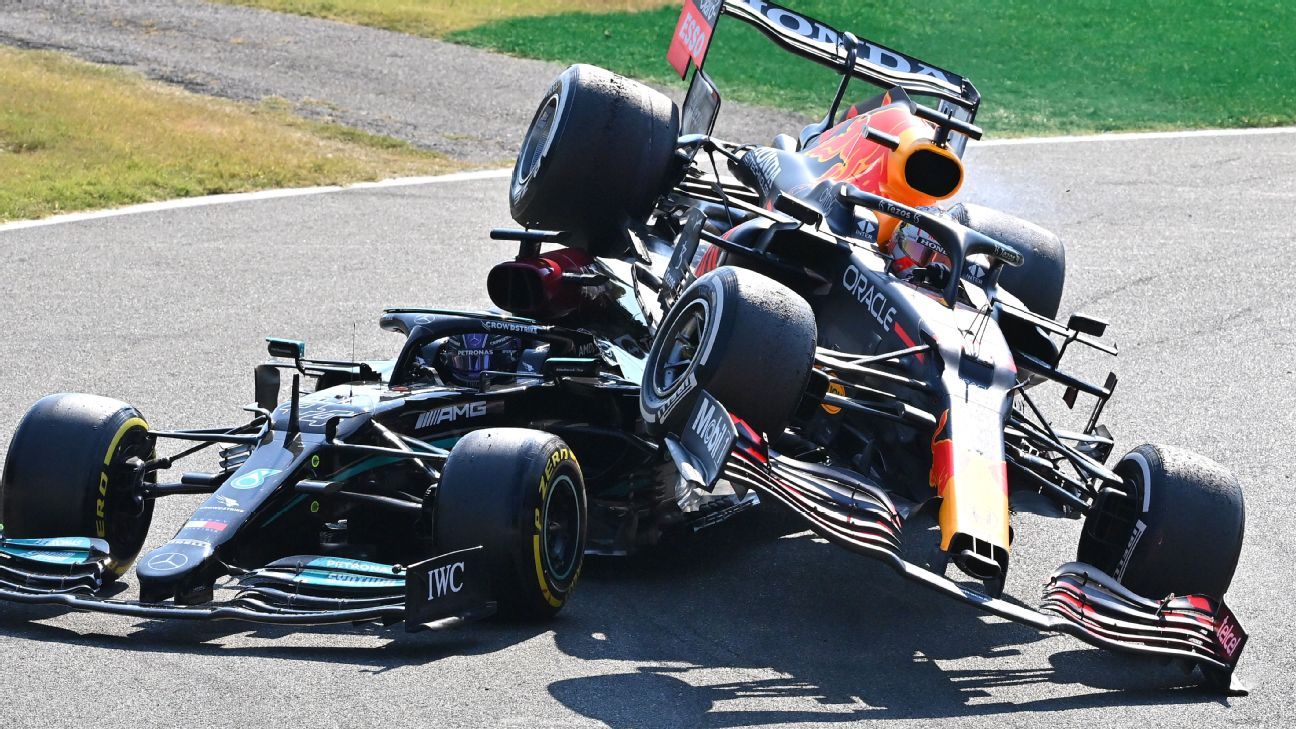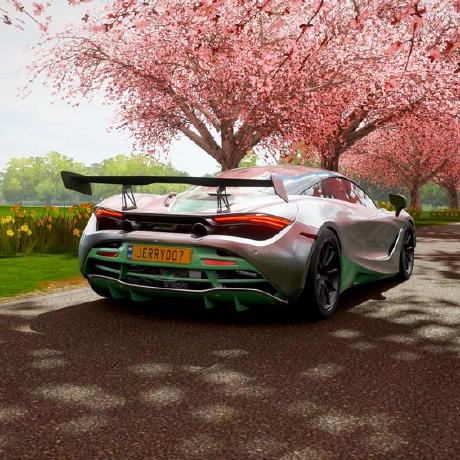Physics Blog


Jerry Zhang
Feb 22, 2022
Formula 1 - Momentum
Introduction:
Momentum also plays an important role in the world of Formula One Racing. Since race cars are often very close to each other during turns, collisions often happen ( This is the reason why most people enjoy watching Formula One). With Momentum concepts learned in grade 12, we can actually calculate the velocity and direction of race cars after the collision. As you have seen in the image above, Verstappen's race car (on the top) locked together with Hamilton's race car (on the bottom) during the Italian Grand Prix in 2021. This is one of the most significant track events that happened last season.
Background information:
Linear Momentum:
Momentum is the quantity of motion of a moving object. The linear momentum of an object is the product of the object’s mass and velocity:

It is a vector quantity that points in the same direction as the velocity.
SI Unit: kg • m/s
Conservation of Linear Momentum:
The principle states that in an isolated system, the total linear momentum remains constant.
An isolated system is the vector sum of the average external forces acting on the system that is zero.

The principle applies to a system containing any number of objects, regardless of the internal forces in an isolated system.
Completely inelastic collision:
The maximum amount of kinetic energy has been lost during a collision, making it the most extreme case of an inelastic collision (Watch the video below for a real-world example). Though kinetic energy is not conserved in these collisions, momentum is conserved, and we can use the equations of linear momentum to understand the behaviour of different components in the system.
Question 2: Verstappen & Hamilton Collision!
But what if there’s no sand to stop the cars?
Verstappen is travelling north with a speed of 112 km/h and a mass of 903 kg (including driver, car & fuel) and Hamilton is travelling N17.5ºW with a speed of 129 km/h and a mass of 905 kg. (Hamilton is on the East of Verstappen) Verstappen wants to take the lead after this turn, so he took the inner corner, but he did not notice Hamilton’s position, resulting in a collision with the cars locked together after the collision. Assume that there’s 0 net external force acting on the two race cars during collision. The collision is completely inelastic.
What are the direction and final velocities of the two drivers?
General steps to approach this type of problem:
1. Solve the final velocity in the x-direction
2. Solve the final velocity in the y-direction
3. use the Pythagorean theorem and trigonometry to get the final velocity and direction
Let's draw a diagram visualizing the motion of Verstappen and Hamilton using the given information.

Then, we can write out all of our given information including the x-component and y-component (Reminder: Middle step needs to have 3 decimal places or you will lose marks :) )!

We will calculate the final velocity in the x-direction.
Notice: Verstappen's initial velocity in the x-direction is 0 and we can cancel it out right away.
Remember: this is a completely inelastic collision so the two drivers have the same final velocity!

Then, we will calculate the final velocity in the y-direction.
Remember: this is a completely inelastic collision so the two drivers have the same final velocity!

Finally, we would calculate the final velocity using the Pythagorean theorem and the direction using trigonometry.
Notice: the angle from this calculation is West to North, to make our answer easier to communicate in the context of the question, we will convert it to North to West.

Therefore, the direction and final velocities of the two drivers are approximately 33.09 m/s [ N9.38º W ].
Explore Above & Beyond:
One of the most dramatic collisions in the 2021-2022 season of Formula One occurred at the beginning of the Hungarian Grand Prix.
On a damp track, Bottas made a horrible start with lots of wheelspin on his intermediates (tires used under damp track conditions). After dropping to fifth from his front-row starting spot, he lost control under braking for the first corner (why did he lose control? Hint: check the video in the previous blog post).
He became a "Bowling Ball" that knocked a McLaren racer and both Red Bull racers out of the track. (Is this a planned "assassination" against the Red Bull planned by Mercedes?) Watch the video below to see the full collision process:
After watching the video, how would you classify the series of collisions? Why?
Jerry Zhang
High School Student | Life-Long Learner | GitHub: https://github.com/JerryZhang0920